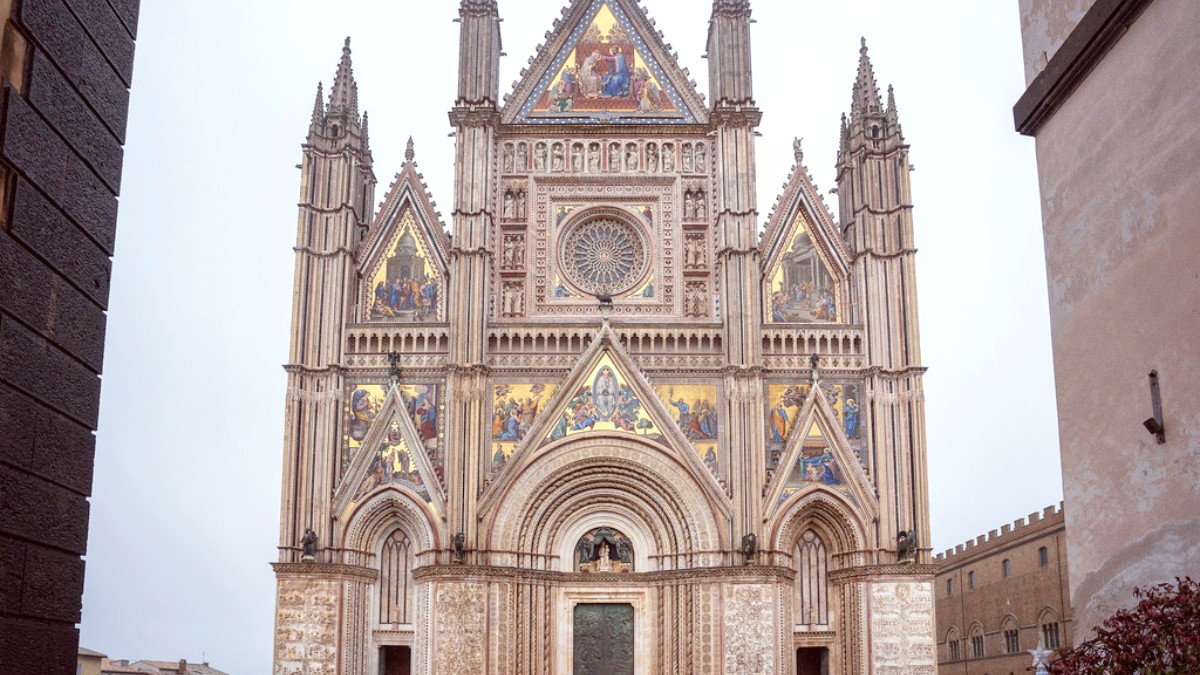
Umbria And Le Marche, Italy
Umbrian cuisine, often called "cucina povera" (poor cooking), originates from peasant traditions. It highlights simple, seasonal ingredients from rural communities, crafting hearty and flavorful dishes.
Being landlocked, Umbrian cuisine does not focus on seafood. Instead, it relies on fresh vegetables, legumes, cured meats, wild game, truffles, and the region's renowned olive oil. This tradition reflects the agricultural landscape and history of self-sufficiency.
Orvieto is known for this crisp white wine, made from Grechetto and Trebbiano grapes.
Local dishes often feature game from surrounding hills, like wild boar or pigeon.
Specific pasta types might vary by town, with strangozzi common in the Orvieto area.
Hand-rolled pasta, similar to thick spaghetti, served with a rich black truffle sauce. Truffles are a prized Umbrian ingredient.
Find in many trattorias, especially during truffle season (autumn).
Roasted pigeon cooked with a savory sauce, sometimes including olives and herbs.
A traditional Orvietan dish, often found in rustic restaurants specializing in local game.
Slow-roasted, boneless pork, seasoned generously with garlic, rosemary, and wild fennel.
Often served as a delicious sandwich from street vendors or at local delis, or as a main course in trattorias.
Italian ice cream. Numerous gelaterias in Orvieto offer a wide range of fresh, intensely flavored gelatos. Seek artisanal gelato for the best quality.
A simple, ring-shaped cake, often eaten for breakfast or as an afternoon snack. It is light and spongy.
Orvieto presents high-quality dining for special occasions, with a focus on refined Umbrian cuisine.
Numerous trattorias and osterias throughout Orvieto's historic center offer authentic local food at reasonable prices, excellent for satisfying meals.
For quick and affordable options, local bars and markets are good choices.
International cuisine options are limited in Orvieto. The city's culinary focus is heavily on traditional Italian and Umbrian cuisine, which forms part of its charm.
For diverse international flavors, consider visiting larger cities in Italy.
Vegetarian options available (e.g., pasta al pomodoro); vegan needs careful inquiry (no dairy/eggs).
Growing awareness; gluten-free pasta/rice dishes. Inform staff about allergies clearly.
Very limited to non-existent. Travelers with these requirements should plan to self-cater.
Carry a small card with dietary restrictions translated into Italian.
Some restaurants in Orvieto offer dining in ancient Etruscan caves or medieval cellars carved into the tufa rock.
These subterranean spaces present a memorable and atmospheric setting for a meal. Look for restaurants advertising dining in a "grotta" or "cantina."
Carry a small card or use a translation app to clearly communicate dietary restrictions in Italian.
Black truffle season extends from autumn into winter.
Late autumn/early winter marks the production of new olive oil, celebrated with tastings.
Food festivals ("sagre") occur throughout the year, celebrating specific products like chestnuts, mushrooms, or wine.
Dessert to complete the meal.
Espresso to finish, followed by an after-dinner liqueur (e.g., limoncello, amaro). Not all courses are necessary; locals often have a "primo" and "secondo" or one substantial course.
Hard almond biscuits, very similar to Tuscan cantucci, often dipped in Vin Santo or coffee. They are crunchy and flavorful.
A simple, ring-shaped cake, often eaten for breakfast or as an afternoon snack. It is light and spongy.
Italian ice cream. Numerous gelaterias in Orvieto offer a wide range of fresh, intensely flavored gelatos. Seek artisanal gelato for the best quality.
Umbria's "cucina povera" highlights quality, seasonal ingredients and honest cooking.